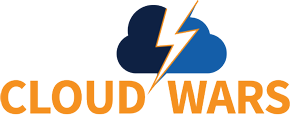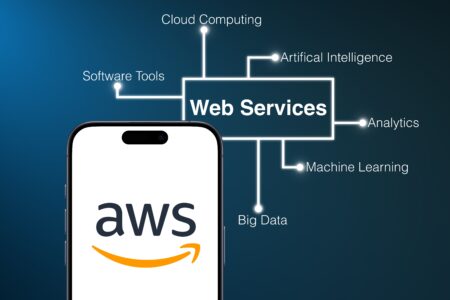1. Introduction
Data is an essential part of any initiative and is often the most complex and underestimated area in any ERP implementations. Managing your data during a project could be challenging based on the project size, requirements and systems involved in the migration to the new selected system. Here I have listed some tools with examples and best practices that can assist in data management in an ERP implementation project.
Tools that can be used for effective management of data are:
- Scope sessions – Scope is the foremost important step in any initiative. The scope of data required for data migration, along with any key decisions from stakeholders, should be well documented to avoid scope creep and to ensure an accurate and smooth data migration.
- Data management tools– Leverage with different data management tools depending on the business requirements in moving the legacy data to the new ERP system. D365 F&O offers tools like data management framework, various database operations [Backup/Refresh/Point in time restore], and cross-company data sharing.
- Different techniques for migration -Identify the different methods that can be used for a successful configuration and data migration. D365 F&O offers various techniques data entities, configuration templates, data packages, BYOD, dual write, and so on.
- Validation and testing – Export the validated data and testing for validation by defining acceptance criteria.
1.2. Primary areas to address
Two primary areas which a project team needs to address in their planning and data collating activities for successful data migration is:
- Configuration data – includes setting up the base data and the parameters, e.g., AP, AR, Inventory parameters, to enable functionalities such as supply chain, financial, tax, retail, project management, and so on.
- Data migration – is the task of migrating the data from existing legacy systems to a new selected ERP system. It includes master data, e.g., customers, vendors & inventory, and open transactions, e.g., general ledger balances, free orders, open AP, open AR, on-hand inventory, and so on.
2. Managing configuration and data migration
ERP needs a robust framework and policy for managing the configuration and data, as these play an essential role in getting the right output for solutions used in an organization’s digital transformation initiative. Both configuration and data are better managed when there are the right data management tools available for making management more effortless.
Planning is the foremost important tool that makes the rest of project activities and deliverables easier and gives stakeholders the visibility of what, when, and from whom to expect. In planning, ownership is an essential attribute as it helps in making implementations more accountable and predictable.
Tips:
- There are different tools available to create an ownership matrix, including the stakeholders and other project team members for accountability. E.g., RASCI matrix template.
- Facilitate scope exercise with the key stakeholders and other project team members as every record that needs to be migrated has a cost, the question is not whether it can be done but should instead be whether it is worth it. E.g., Migrating the historical balances and open balances or just the open balances from legacy systems.
2.1. Configuration Management
Configuration means setting up the base data and the parameters, e.g., AP, AR, Inventory parameters, to enable functionalities such as supply chain, financial, project management, tax, retail, and so on.
Managing these configurations is an important task, as these are mostly driven by the critical decisions in the solution and project.
2.1.1 Configuration management activities
- Configuration planning – Identify all the configurations required, including master data, parameters, and reference data.
- Scoping – Discuss with the key stakeholders and other project team members the collection of configuration inputs and data entities required for business operations.
- Document Key decisions – Any critical decisions made by the key stakeholders regarding transforming the configurations should be well documented.
- Create, validate and test Configuration – Set up the configuration in an environment followed by validation and testing of the data.
- Export and import configurations – Export the validated and tested configuration data into excel files with proper versioning. Import the validated and tested configurations in the target environment and companies.
Configuration Checklist for ERP implementation:
- Create your list of configurations needed for the ERP project implementation and create ownership matrix [e.g., RASCI] for accountability.
- Identify any cross-functional modules [e.g., AP & AR] configuration and any other additional resources required to complete the configuration.
- Build a list of environment-specific configurations.
- Maintain a company-specific configuration list. When defining global rollouts, use a global template and maintain a revised list that needs to be maintained for each company.
- Try to automate the configurations and movements across environments to avoid any risk of human errors.
Below is an example of Microsoft Dynamics 365 Finance & Operations Configuration global template. You can tailor a global configuration template to company-specific configuration template and reuse them in various implementation projects.
 2.2. Data Migration Management
2.2. Data Migration Management
Data Migration is another important activity in the project. Data migration involves migration of data [such as master and transaction] from the legacy system. From an end to end perspective the key steps in data migration management includes but not limited to:
2.2.1 Data Migration activities
- Planning – Involve the key stakeholders and other project team members in planning, scoping, techniques, tools, and required environments.
- Data export and cleansing – Discuss the activities involved in cleansing the data with key stakeholders and other project team members. Cleansing is a business responsibility; however, you can plan what, how, and when this should be achieved.
- Data transformation – Discuss the transformation requirements and set some rules with key stakeholders and other project team members.
- Data validation – Maintain a checklist of validation criteria for internal project reference for the extracted data provided by the business.
- Data mapping – Map the source and target data at the data entity level; for example, the Vendors entity involves account information, addresses, bank account, contacts, and so on.
- Import of data – Before import validate the data. Maintain a workbook that lists what all records in various modules have been extracted, cleansed, verified and migrated.
- After migration – Show and confirm with the business about the accuracy of data and completeness.
Best Practices for managing configuration and data migration
- Always have a configuration and data migration plan, maintained throughout the lifecycle of the project.
- Always baseline the configuration in an environment and copy that in other environments. E.g. Production environment with configuration data as the baseline for other environments.
- Facilitate scope sessions and update the key decision matrix when a decision is made.
- Create an ownership matrix for implementation accountability.
- Ensure sign off on the business requirements by key stakeholders towards data migration.
- The migrated data should be validated and tested under the acceptance criteria.
- Ensure the data imported is always cleansed, reviewed, and validated by the business before the import.
- Maintain proper versioning of your configuration and data migration excel files for migration of only validated and tested data into the environments.
- Leverage with different data migration tools available for successful configuration and data migration.






